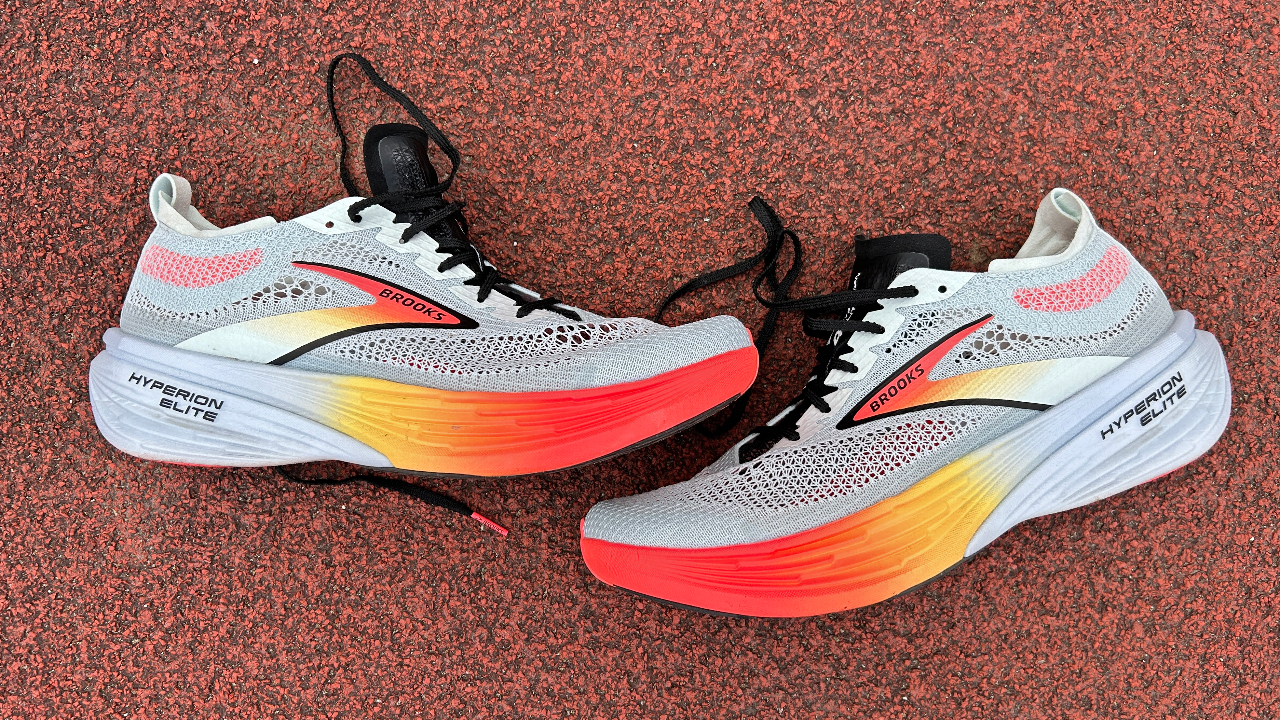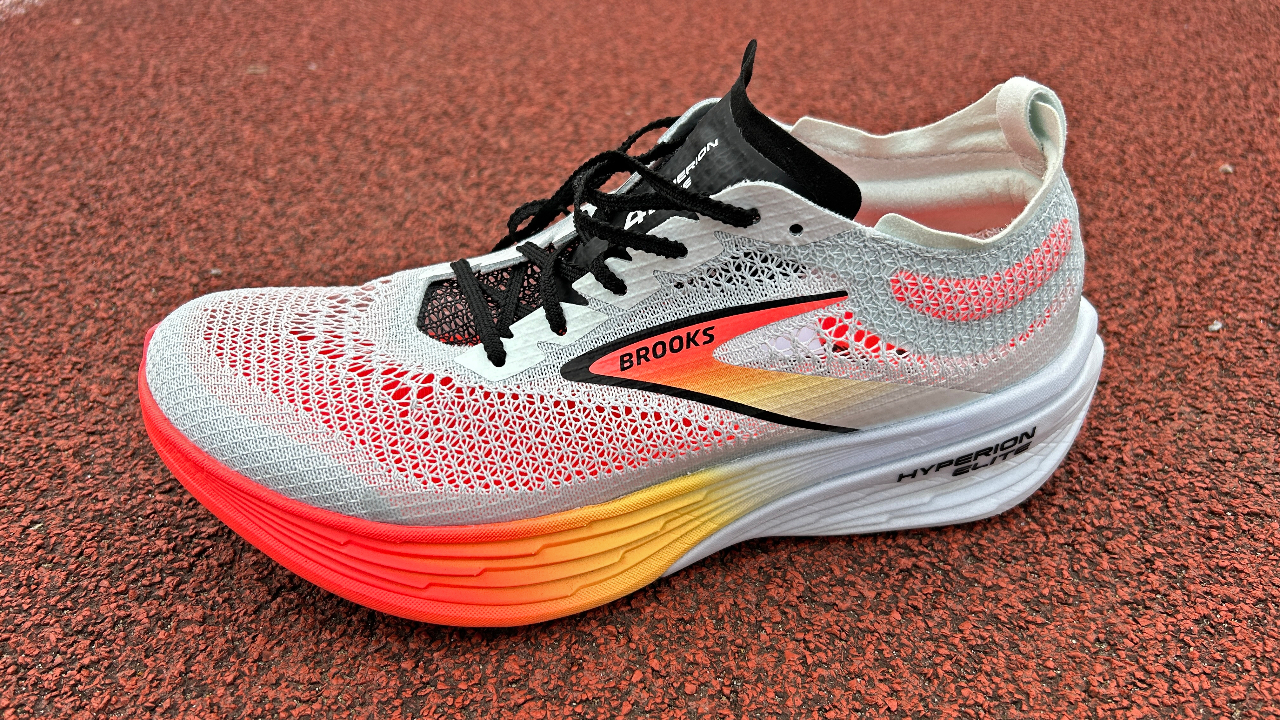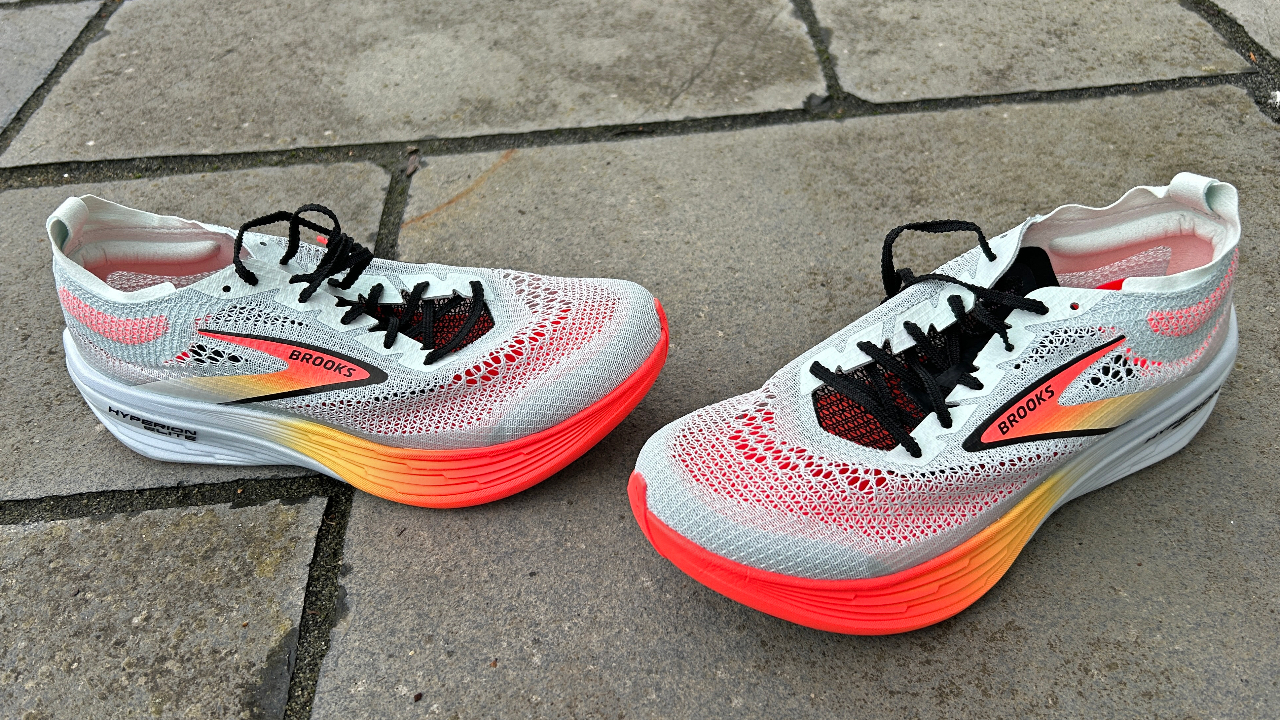
The Brooks Hyperion Elite 4 is the most impressive racing shoe Brooks has released so far and an improvement on the underwhelming Hyperon Elite 3. Yet it still suffers in comparison with the best carbon plate running shoes from other brands.
This is mostly down to its midsole foam, which lacks the bouncy, propulsive feeling you get from shoes like the Nike Vaporfly and others. The Hyperion Elite 4 is a fast shoe and more stable than some other super-shoes, but it’s not as fast—and it’s too expensive considering the performance it delivers.
Brooks Hyperion Elite 4: Price And Availability
The Brooks Hyperion Elite 4 launched in January 2024 and costs $250 in the US and £220 in the UK. It’s at the cheaper end of the scale for carbon plate racing shoes, but still expensive, and the price has gone up £30 in the UK compared with the Brooks Hyperion Elite 3.
How I Tested This Running Shoe

I ran 33 miles in the Hyperion Elite 4, using it for two progression runs and a track session during my marathon training. I’ve tested the past three versions of the Hyperion Elite, along with almost all the carbon plate running shoes launched by major brands in the past few years.
Design And Fit
Given the shortcomings of the Hyperion Elite 3, I was hoping for a major update to the design, including a new midsole foam. Brooks has obliged on the latter, but only with an updated version of its nitrogen-infused EVA DNA Flash foam, rather than bringing in a Peba-based foam like those used in most carbon racers.
The DNA Flash v2 foam is lighter and softer than the foam used on previous versions of the shoe, and the Elite 4 is a lot lighter than the Elite 3 in general. The new shoe weighs 7.9oz/224g in a UK size 8.5, while the Elite 3 was 8.8oz/249g in a UK 9.
Some of that drop in weight is due to the new upper. Instead of the chunky knit used on the Elite 3, the Elite 4 has a breathable woven upper that holds the foot well during fast runs. I used a shoe that is half a size smaller than my usual UK size because I’m often in between a UK 8.5 and a 9, and Brooks shoes often come up a little long for me. I’d say using your usual size will be fine for most runners, but if you’re between sizes I’d go for the smaller one.

An Arris carbon plate runs through the midsole. This has an open lattice design and adds more stiffness to the already fairly firm DNA Flash v2 midsole. There is a large cut-out on the bottom of the midsole to reduce weight. The stack height is 40mm at the heel and 32mm at the forefoot for a drop of 8mm, which is a 5mm rise in stack height on the Hyperion Elite 3.
As with most carbon shoes, the outsole coverage is minimal to help keep the weight down. Most of the forefoot is covered, though there are gaps in the rubber. I found the shoe gripped well in wet conditions.
Running Performance
Brooks was one of the first brands to launch a carbon plate shoe with its Hyperion Elite, which was firm, a bit of a disaster and quickly followed by the Hyperion Elite 2. This was a good shoe at the time, with its lightweight DNA Flash midsole that delivered a fast ride, and though it didn’t match the Nike Vaporfly it was still a viable racing option.
Since then, however, almost every other major brand has adopted a similar style of carbon shoe, with a high stack of a springy Peba-based foam. Instead of doing this, Brooks just changed the upper on the Hyperion Elite 3, which made it a heavier and less effective racing shoe than the Elite 2.
The Hyperion Elite 4 is an improvement, but because Brooks has stuck with an nitrogen-infused EVA foam the ride still lacks the bouncy, propulsive feeling you get from other carbon shoes, as well as their comfort levels. By the end of 10-mile runs the ride had started to feel too firm, and I wouldn’t consider the Elite 4 a marathon racing option for most people.

It is a light and fast shoe, and when I did a track session running three sets of 2K and then 5 x 400m reps, the Elite 4 felt pretty good. The firmer foam is less noticeable on a track and helps to keep turning your feet over at fast paces on short reps. While it’s not going to stop you running fast, the lack of punch is noticeable compared with the best carbon shoes. Running in the Hyperion Elite 4 is harder on the legs than in softer, springier shoes. It also feels harder to sustain fast paces over longer distances. If you’re spending this kind of money on a plated super-shoe that helps you run more efficiently, and thus faster, you simply won’t get the same level of benefit from the Elite 4 as you would from other shoes.
One advantage of the firmer foam is that the Hyperion Elite 4 is more stable than most super-shoes and I’d expect it to be more durable. You can use the Hyperion Elite 4 more frequently in training as a result, and it might be a racing option for some who have found softer super-shoes too wobbly.
Is The Brooks Hyperion Elite 4 Worth It?
The Brooks Hyperion Elite 4 is a fast shoe and the best Brooks running shoe for racing, but it doesn’t reach the standards set by other brands’ carbon shoes. It’s around the same price as excellent racing shoes like the Nike Vaporfly 3, Saucony Endorphin Pro 4 and Asics Metaspeed Sky Paris, and simply doesn’t deliver as fast and propulsive a ride as those shoes.
I rate the Elite 4 more in line with the best super-trainers, like the Saucony Endorphin Speed 4 or Adidas Adizero Boston 12. It feels a little faster than them, but it’s more expensive. Until Brooks updates the midsole foam to use a more dynamic material, it’s hard to see the Hyperion Elite line competing with the best racers.







